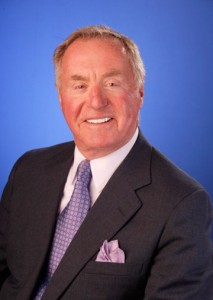I’m thrilled to introduce Hal Milton, who will be teaching our Fall Semester 60201 (Legal Writing and Analysis) class. Hal’s bio is below, and he’ll be visiting the MSPL during the second week of BootCamp.
Harold (Hal) W. Milton, Jr.
Hal received a B.S. degree in aeronautical engineering from Purdue University in 1957 and worked for the Rocketdyne Division of North American Aviation test firing rocket engines for the Thor and Atlas missiles. Having been commissioned a 2nd Lt. upon graduation from ROTC at Purdue, he then attended pilot training in the U.S. Air Force. Because of his experience in the development of rocket engines, he was one of the first officers assigned to and for development of the missile training school for the USAF. As a missile maintenance officer, Hal monitored the building of a training launch pad for training the first crews of the Atlas ICBM missile sites, for which he received the Air Force Commendation Medal. Following the military tour, Hal enrolled at the Georgetown University Law Center, where he was a member of the Law Journal. Hal passed and was admitted to the Virginia Bar prior to graduating from law school in 1964. Later that same year, he was admitted to the Michigan Bar. During law school, Hal worked as an Examiner in the U.S. Patent and Trademark Office (USPTO) and then as a Patent Advisor in the Office of Naval Research, U.S. Navy.
Hal entered the private practice of law in 1964 in metropolitan Detroit, Michigan, the area where he grew up. In the years since, he has engaged in all phases of patent, trademark and copyright practice, including prosecution of patent applications and licensing.
Hal’s practice also included serving as lead trial counsel and successfully litigating various patented technologies; assisting new enterprises in protecting their technology to entice investment or the sale of the enterprise; and overseeing the creation of patent, trade secret and trademark portfolios during periods of significant growth for several large corporations. As one example, he represented an automotive supplier to develop a dominant patent portfolio over forty years from start-up to maintain a major portion of their relevant market. In another success story, Hal helped catapult a start-up company by obtaining a patent for them, which they immediately used to sue an established competitor to obtain both monetary damages and an injunction. Hal successfully argued before the Court of Customs and Patent Appeals to force the USPTO to curtail the rejection known as “undue multiplicity.” During the last forty-five years, Hal has mentored approximately 100 new attorneys in the practice of patent prosecution and, as a result, developed an organized and focused training program. The training program serves as the basis for a law school course in patent preparation taught by Hal. In addition and as an adjunct to this book, Hal has developed a word processing computer program (patentarchitect.com) to render more efficient and focus the preparation of a patent application. He has been added to America’s Best Lawyers list published by Woodward/White, Inc.
